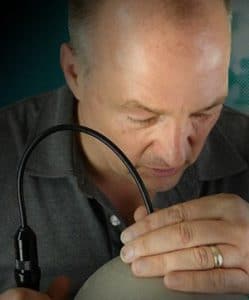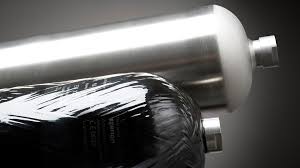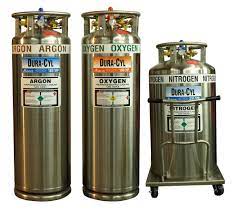
Cylinder Inspection Training: Why a Maintained Cylinder Is a Happy Cylinder
Uncover the importance of gas cylinder inspections and training. Dive deep into ensuring safety, boosting efficiency, and prolonging cylinder life.
A majority of commercially used valves are made from Brass. There are valves made from different metals, but Brass is most often seen and used in many industries. Cylinders, on the other hand, are manufactured from steel, aluminum or a composite material. Even a composite cylinder has threading manufactured from aluminum in order to receive the valve. Valves are manufactured from one alloy and the receiving cylinders are manufactured from a different alloy. Anytime you have two dissimilar metals you must be aware of and protect against the possibility of Galvanic Corrosion / Galvanic coupling. This corrosion can damage the threads and prevent the valve from being removed from a cylinder.
Galvanic corrosion requires a path between the two metals. If you have two metals, but no way for them to interact, the risk is significantly reduced. However, if you have a path, such as an electrolyte, the metals can interact, and a flow of electrons can occur. During this flow the higher resistance metal becomes a cathode and the lower resistance metal becomes the anode. The cathode will generally remain intact while the anode will corrode or weaken. Which metal becomes a cathode, and which becomes an anode depends on its noble properties.
The more noble a metal, the least likely it is to corrode, or be a cathodic material. The most noble of metals are gold and graphite’s. These metals are not known to easily corrode. The least noble a metal, the more likely it is to become the Anode. These metals include Magnesium, zinc and some aluminums. If you place a more noble metal in contact with lesser noble metal, and they have a conductive material between them, the lesser noble metal will have a greater chance of corroding. The distance the two metals are on the Noble scale will determine the rate of corrosion. The closer they are together on the scale the least chance of corrosion.
Between steel and aluminum cylinders, they are both low on the noble scale, with aluminum being the lower of the two metals. Carbon composite cylinders are composed of graphite’s which is one of the most noble metals, and higher on the scale. Now when we contact the Brass valves with these metals or wrap carbon fibers around the aluminum shell of a composite cylinder, we need to be aware of the possibility of introducing an electrolyte and the effects of corrosion on these dissimilar metals. (For further discussion of Galvanic coupling and composite cylinders, visit this Blog post).
There are different types of brass. Most brass falls within the middle of the noble scale, while steel and aluminum are lower on the scale. Due to the noble scale, brass being in contact with steel or aluminum can cause corrosion if there is a conductive path between the metals. The electrolyte is generally moisture or could be the contents of the cylinder itself. When a cylinder is submerged in water, such as in diving, there is a greater chance of water penetrating between the valve and cylinder threads, increasing the risk of corrosion. The same circumstance can occur in the beverage industry or any time moisture is a factor with a cylinder and valve.
In order to lessen the risk of galvanic corrosion the two metals need a barrier, so the electrons can not pass between the cathode and anode. Cylinder valve threads can be coated with a suitable compound such as a dielectric lubricant or thin tape. The compound should eliminate the path for flow of the electrons. When using any type of compound, it is important to note the use of the cylinder and ensure the compatibility of that compound with the contents or use of the cylinder.
There is near 100 % surface contact of the brass cathode threads with 100% contact of the steel or aluminum anode threads. Given the amount of surface area of direct contact between the valve and cylinder threads, corrosion is likely. This corrosion can appear as corroded metal in the cylinder valve area, or it can cause the valve to seize on the cylinder by damaging the threads. The corroded metal of the cylinder threads could prevent the easy removal of the valve. If the valve is forcibly removed it can further damage the valve and the cylinder threads. Likely making both the valve and cylinder unsafe for further use.
When placing a valve in a cylinder it is important to determine the likelihood of an electrolyte getting between the valve and the cylinder. If there is a potential of a fluid penetrating between the metals, causing the sharing of electrons, then some type of protection should be applied. Failure to protect the two metals from contact will cause the anode to corrode at a faster rate thereby jeopardizing the integrity of the cylinder. Since this corrosion will happen within the threads, it is not noticeable from the exterior. In such a situation the valve should be removed from the cylinder on a scheduled basis and the cylinder threads inspected to prevent a potential failure or damage to the cylinder.
Copyright © [hfe_current_year] [hfe_site_title] | Powered by [hfe_site_title]

I enjoy continuing to build the business based on safety since 1999. CTS focuses on the inspection of high pressure cylinders, the maintaining of the valves and basic maintenance of high pressure compressor systems. CTS stays current in techniques and tools to train both the new and novice employee. We publish articles, update training tools and have created an APP to assist during the inspection process.
#cylinder #safety #hazmat #training #cylinderinspectiontraining #cylindex

Uncover the importance of gas cylinder inspections and training. Dive deep into ensuring safety, boosting efficiency, and prolonging cylinder life.

Is your composite cylinder showing signs of wear? Discover when to seek a professional repair service in our comprehensive guide.

29 CFR 1910.101 intro Handling cryogenic cylinders involves working with extremely low-temperature gases that pose unique safety risks. To ensure the safe handling, storage, and transportation of these hazardous materials,

Introduction Firefighters encounter many risks while on duty, including hazardous materials and high pressure bottles. High pressure bottles are used for a variety of purposes in firefighting, including powering hydraulic